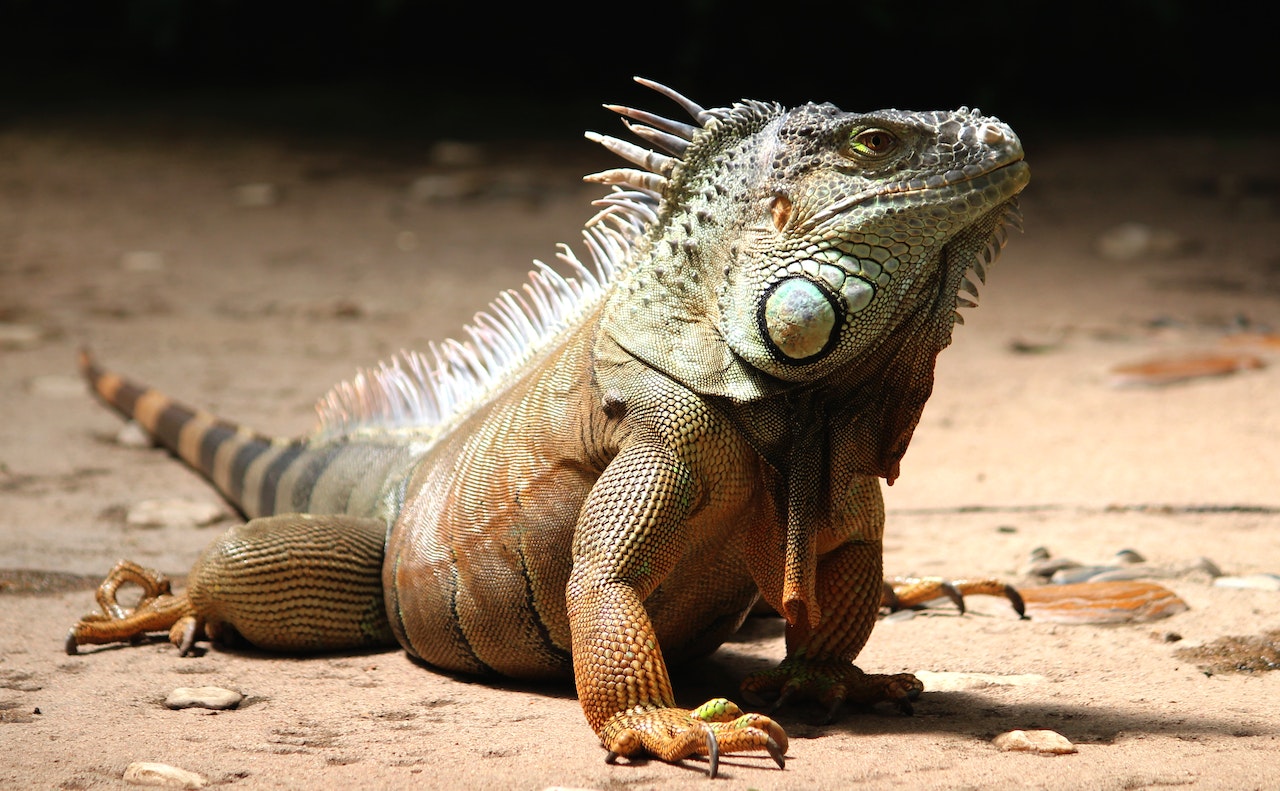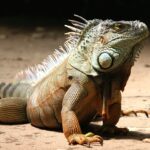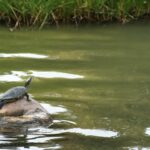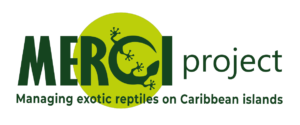Invasive alien species have been a major factor in 60% of species extinctions worldwide. This is the conclusion of the latest report from IPBES, the Intergovernmental Science-Policy Platform on Biodiversity and Ecosystem Services. The Caribbean, as an island system considered a hotspot of biodiversity, is particularly concerned.
Last week in Germany, the tenth session of the IPBES was held, focusing on invasive alien species. The resulting report, the fruit of an analysis of thousands of scientific publications, details the danger posed by these species to biodiversity. Introduced into new regions of the world by accident – transported unintentionally in boats or planes – or voluntarily – to serve as pets, ornamental plants or to take advantage of the services they offer – certain species proliferate uncontrollably, with terrifying consequences. By entering into competition with local species, as new predators or through the pathogens they bring with them, these species cause imbalances in ecosystems and are implicated in no less than 60% of extinctions. As one of the major causes of biodiversity decline, the phenomenon also generates substantial economic costs.
On a global scale, the numbers are staggering. The IPBES has counted some 37,000 species that have already been introduced, including 3,500 that are effectively invasive. These numbers are set to rise, as the report forecasts a 36% increase in exotic species by 2050.
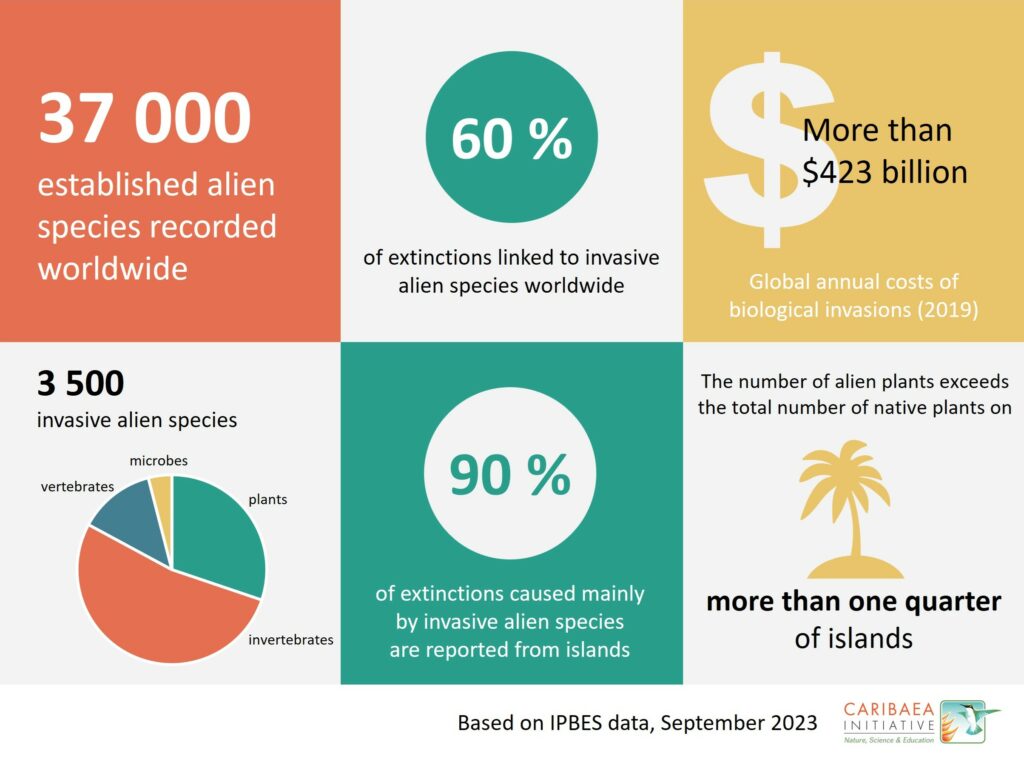
The Caribbean, on the front line against invasive alien species
Considered one of the world’s major biodiversity hotspots – in other words, a geographical area with an exceptional diversity of plants and animals – the insular Caribbean is particularly threatened by invasive alien species.
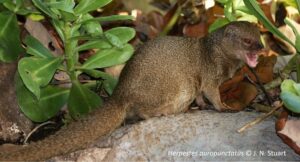
Small Indian mongoose (Herpestes auropunctatus)
The islands of the Caribbean arc share the characteristic of being both distant from each other and, to a greater or lesser extent, from the American continent. This relative isolation is both their strength and their weakness. On the one hand, it has favored the evolution of numerous endemic species over geological time, i.e. species found nowhere else on the planet. On the other hand, it has also made these same species particularly vulnerable to biological invasions, as they are often unable to compete with new arrivals. On the other hand, certain human activities, such as international trade and tourism, have considerably increased the chances of introducing exotic species into the region. Ships, planes and vehicles can unwittingly transport plants, insects and other organisms that then become invaders.
There are many examples of problematic species in the Caribbean. Among the best known is the small Indian mongoose (Herpestes auropunctatus), deliberately introduced to several islands between 1870 and 1900 to control rats (themselves exotic) and venomous snake populations. As predators, mongooses have been found to be the major cause of extinction of several species of skink lizards endemic to the West Indies.
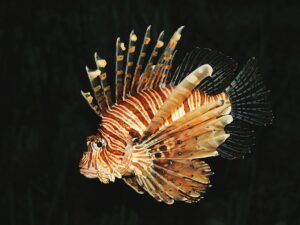
Lionfish (Pterois volitans)
Another particularly spectacular example is the lionfish (Pterois volitans), native to the Indian and Pacific Oceans. In Caribbean reefs, where they have no natural predators, these efficient predators cause major ecological imbalances. Reacting in time to limit their proliferation is a major challenge.
These two impressive cases represent only a tiny fraction of all the invasive alien species affecting the biodiversity of the Caribbean islands. Faced with this growing threat, we did not wait for the IPBES report to take action. The study of the many other invasive alien species has indeed been one of the major themes of Caribaea Initiative since its creation in 2014.
Invasive alien species – a key theme of Caribaea Initiative
The fight against invasive alien species involves many complementary steps, which are regularly implemented in the student projects supported by Caribaea Initiative, as well as in our research programs.
The MERCI project, an ambitious program starting in 2021, is entirely devoted to invasive alien reptiles, with the aim of completing scientific knowledge and implementing concrete management measures. Among these, the most effective and least costly action is to prevent the introduction of new species. Many actions and freely accessible resources have been deployed to raise awareness among the general public. The training of customs agents in the recognition of problematic reptiles, offered by the team in several ports of Guadeloupe, is part of the objective of reinforcing border surveillance.
In the field, population control campaigns can sometimes be effective. Also as part of the MERCI project, several missions were organized in the Saintes islands to rid a fragile ecosystem of the freshwater turtles that had invaded it.
However, Caribaea Initiative’s main means of action, which lies at the very heart of the association’s mission, is the development of scientific capacity, with a dual focus regarding invasive alien species as well as other issues: producing qualitative scientific knowledge in the service of biodiversity conservation, while enabling the development of a network of local experts, notably through the training of Caribbean students.
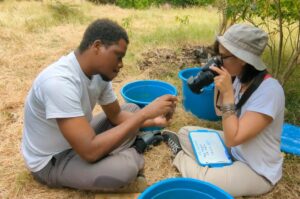
Jeffey and Annabelle taking photos of an invasive turtle
Many of the Master’s students supported by Caribaea Initiative have worked on issues directly related to a variety of invasive alien species, which have been little studied until now: the distribution of a newly introduced frog in Cuba, the assessment of the invasive potential of dozens of reptiles in the West Indies, the estimation of the risk posed by invasive mammalian predators to numerous local bird species, or the study of the diet of a gecko introduced into Guadeloupe. Thanks to the academic studies funded by Caribaea Initiative, some of our PhD students that became doctors or will soon be, are now true experts in the study of invasive alien species, such as Jeffey M. Paul, a PhD student from Haiti who is devoting part of his thesis to invasive freshwater turtles. His work follows on from that of two young PhDs in ecology trained under the Caribaea Initiative program, Annabelle Vidal, from Cuba, who took part in numerous missions to various territories in the Lesser Antilles as part of the MERCI project, and Christopher Cambrone, a researcher from Guadeloupe, who recently published a major quantitative analysis highlighting the role of invasive alien species in the decline and extinction of certain bird species. Strength in numbers, these three students regularly collaborate to improve knowledge of invasive alien species in the insular Caribbean.
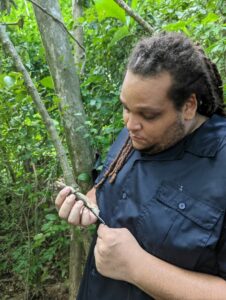
Christopher is handling a gecko
Projects continue, and invasive alien species remain at the heart of the association’s concerns. The work carried out over the last few years has enabled us to develop strong scientific collaborations with partners in various Caribbean countries and territories. The emergence of this network of young experts offers real hope in the fight against the growing threat of invasive alien species in the Caribbean.
Learn more about Caribaea Initiative, association in charge of the MERCI project: www.caribaea.org
Last modified: 7 September 2023
